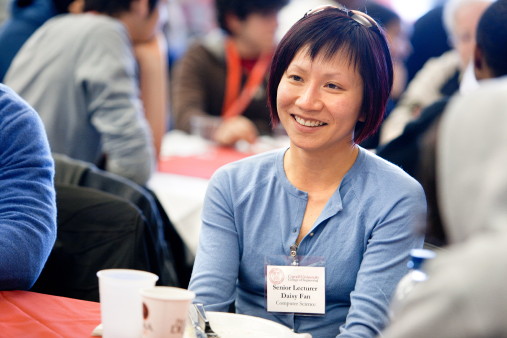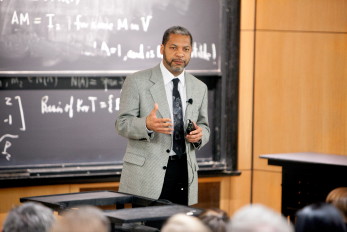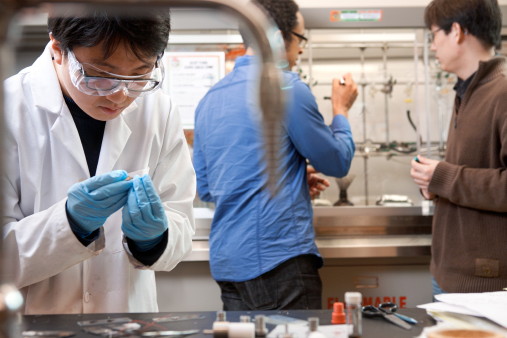COVER STORY
(Page 3 of 5)
Daisy Fan, senior lecturer in computer science, speaks with prospective students.
As of fall 2010, the college's 227-member faculty had 28 females, or 12 percent of the total; underrepresented minorities, 6 percent of the total, included seven African-Americans, six Hispanics and one Native American. There were also 28 Asians and Asian-Americans, which as a group are not underrepresented in engineering.
In the College of Engineering, three racial and ethnic groups – African-Americans, Hispanics and Native Americans – fall under the definition of "underrepresented minorities." Nationally, women are also traditionally underrepresented in engineering. As of 2008, 10.8 percent of tenured or tenure-track faculty in engineering colleges at four-year U.S. institutions were women, according to the National Science Foundation's (NSF) most recent report on women in the sciences.

Lance Collins, dean of the College of Engineering, speaks to prospective students during the college's joint Prospective Candidates Weekend and Diversity Hosting Weekend in April. See larger image
The national situation with underrepresented minorities is also stark, with faculty representation in the engineering disciplines proportionally far below population figures. In 2006, African-Americans were 12.8 percent of the U.S. population; Hispanics, 14.8 percent; and Native Americans, 1.1 percent. According to a University of Oklahoma report, in 2007 underrepresented minorities were just 6.6 percent of faculty in civil engineering departments at top-tier institutions. Departments in other engineering disciplines fell even shorter.
Diverse students, diverse faculty
Enhancing the diversity of faculty is important, in part, because a rapidly changing student population – an increase from approximately 25 percent in 2004 to 33 percent in 2010 among female undergraduates, and an increase from approximately 6 percent to 12 percent underrepresented minorities – requires a faculty that reflects its own demographic trends, say college leaders. But beyond that, says engineering dean Lance Collins, diversity will make the college a better, more vibrant, more intellectually rigorous place."In a world in which you can bring multiple viewpoints from different backgrounds together, that's a richer environment to be in, for students to grow up in, and for colleagues to interact with each other," says Collins, who is the college's first African-American dean. "If we are unsuccessful at increasing diversity at all levels, at some point that will erode and undermine our ability to be an outstanding institution."

From left, graduate student Don-Hyung Ha, assistant professor Richard Robinson, and postdoctoral associate H.aitao Zhang.